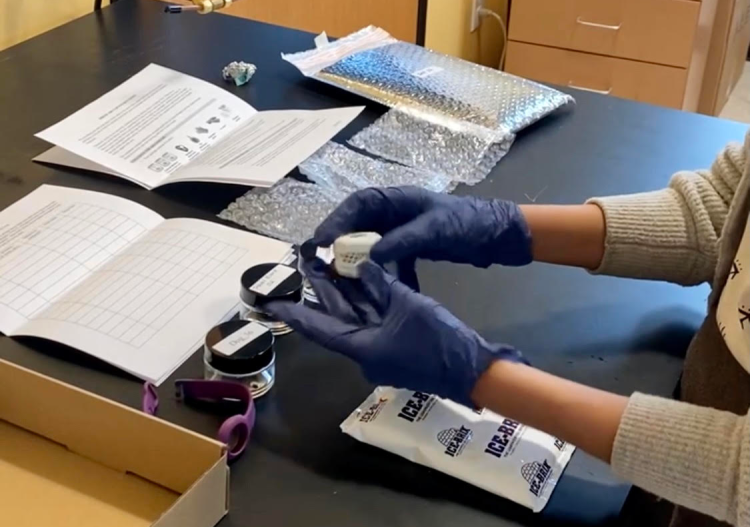Paul M. Rady Department of Mechanical Engineering researchers have identified at least nine pesticide chemicals in the air around Boulder County homes that humans and their dogs have been exposed to.
The air quality study, led by PhD candidate Aniya Khalili and funded by a University of Colorado Boulder Outreach Award, tracked the chemicals that people and their dogs came into contact with in fall 2021. The 38 human-dog pairs that participated in the study had to wear wristbands and dog collar clips for a week that contained sampling tubes to measure the pesticides around them.
"We used high-resolution mass spectrometry to analyze the samples," said Khalili. "The results showed that of the 15 compounds we were testing for, we detected nine of them. Three of them were detected in all the human and dog samples."
The three compounds identified in all 76 samples were n-nitrosodiphenylamine, 4-nitroaniline and 4-chloroaniline. Each of those compounds can be found in pesticides and could pose various health risks including eye, skin and respiratory tract irritation. Very high and repeated exposures may damage the liver and kidneys, according to the EPA.

Mechanical Engineering PhD candidate Aniya Khalili documents the results of her study.

Khalili handles one of the dog collar clips that tracks the chemicals in the air.
"These results could mean that the chemicals are in the air since the 38 people are not living together and have different lifestyles," said Khalili. "If they are exposed to the same compound, it could say something about the community that we are living in."
The study also detected DDD in one human and two dogs, and DDT in two humans and one dog, even though the United States has banned the use of both due to damage to wildlife. The EPA has said that "after the use of DDT was discontinued in the United States, its concentration in the environment and animals has decreased, but because of its persistence, residues of concern from historical use still remain."
"The fact that we even have detected DDD and DDT in any of the participants' samples is a big deal," said Khalili. "There is a 99% correlation between the dogs and their owners that were exposed to DDD and DDT, and yes, it is a small percentage out of the 38 pairings in the whole study. But we shouldn't be exposed to those compounds at all."
Khalili's study focused on detecting the compounds rather than identifying where they are coming from. She noted the chemicals could have originated from pesticides, dog tick and flea medications, or industrial sources.
Khalili conducted this research after seeing several yellow flags on people's yards around Boulder indicating that chemicals had recently been applied. She wanted to educate the community about the compounds that are in some of those pesticides and inspire people to live cleaner lifestyles.
Many of the participants have told Khalili that they are already being more conscious about using pesticides around their homes to protect themselves and their dogs. Khalili said she's proud and excited to see community members taking this next step. Moving forward, she wants to promote even bigger changes.
"I would love to see the regulations around the compounds in these products that we use for gardening be revised," said Khalili. "It wouldn't happen overnight. We would need more studies to ensure that policymakers can rely on the results and make a change. I'd like to not see those yellow flags around anymore."
Khalili partnered with the City of Boulder and Healthy Baby Bright Futures to recruit participants and design the deployment of the study, since the city and organization are well connected with the community. Both collaborators also had a stake in the research, as they were interested in seeing what compounds are in their air.
"It was important to work with the City of Boulder because they could be empowered to make changes to regulations," said Khalili. "With Healthy Baby Bright Futures, it was an educational opportunity. Our study can help teach mothers to not let their babies crawl on chemically treated grass, for example."






